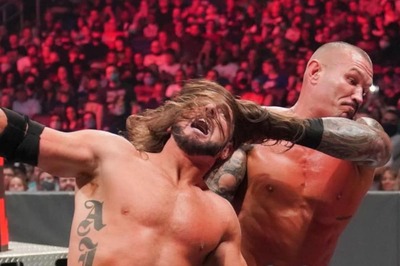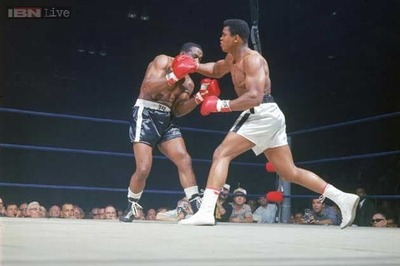
views
Thank the Lord that in the new year, some people are beginning to learn that Nepali Gorkhas are not being recruited in the Agniveer scheme truncated from 15 years to 4 years’ service and that in the near future, the famed diminutive Gorkha warriors wearing Gorkha hats at a slant and Khukuris slung around the waist will be missing on Republic Day parade on Kartavya path.
For five years including the Covid ban, the Gorkha Brigade has been deficient of 10,000 soldiers. Strangely neither India nor Nepal is willing to discuss the impasse; partly due to ego and for Nepal, mainly, as it is bad in terms of engagement. Nepal Foreign Minister NP Saud told BBC last year in August that consensus is needed on any change to the 1947 Tripartite Treaty on recruitment between Nepal, the UK and India. In 2022 similarly, former Defence Minister Bhim Rawal mentioned in parliament that the Tripartite treaty had been violated. Former Foreign Minister PK Gyawali told BBC, “We can’t accept Agniveer, but we can resume recruitment on old plan.” Both leaders are from the Opposition CPN (UML) party. India has said nothing.
On January 4 this year, at the 7th Joint Commission in Kathmandu, foreign ministers of both countries S. Jaishankar and NP Saud met to discuss a host of bilateral issues but not the strategic stalemated Agniveer. Quite baffling.
On December 11 last year, Prime Minister Pushpa Kamal Dahal Prachanda said, “Our Nepali citizens are not only serving the Russian Army but also reportedly serving in the Ukrainian Army”. Nepal has urged Russia to stop their recruitment – almost 200 Nepali citizens have joined the Russian Army under dubious circumstances and six Nepalis have been reportedly killed – and to investigate the number of Nepalis fighting for Ukraine. Some have also joined the French Foreign Legion, such is the adverse effect of Nepal apparently rejecting Agniveer.
Nepal has issued directions that no Nepali citizen will join the armies of Russia or Ukraine. It has also not allowed Gorkha Recruiting Depots at Gorakhpur to conduct rallies in Nepal for recruitment since mid-2022 when Agniveer was announced.
Former Army Chief Gen Mukund Naravane’s book ‘Four Stars of Destiny’ spills the beans over the ownership of the Agniveer scheme. As we have known, it was thrust on the three services by PMO and NSA Ajit Doval as Rahul Gandhi had stated in parliament. Originally designed by late General Bipin Rawat, it was to be a pilot project for 5000 Army personnel but the transformative reform took all three services by surprise, says Naravane. For the Navy and IAF, it was a bolt from the blue. Despite this, the government’s manipulation of incumbent service chiefs in praising the Agniveer project is astounding.
I strongly recommend they watch the biopic ‘Sam Bahadur’ on Field Marshal Sam Manekshaw on how service chiefs must deal with directions from the government, especially on military matters. What no government or military official has revealed is the stalemate over the recruitment of Nepali Gorkha Agniveers since June 2022 including the Covid embargo period. Had General Rawat, a second-generation Gorkha officer been alive, Agniveer in its current avatar would not have materialised.
I spent all of last November in Pokhara, Nepal, the heartland of Nepal Domiciled Gorkhas (NDG) recruitment, interacting with ex-servicemen and other stakeholders. Not a single NDG has been recruited or become an Agniveer for nearly five years. Nepal has not communicated to India any reason for not subscribing to Agniveer. In June 2022, India announced the Agniveer scheme without consulting Nepal. In 2014, Prime Minister Narendra Modi praised the Gorkhas for shedding their blood to protect the territorial integrity of India.
For India, Gorkhas joining the Indian Army is much more than ‘recruitment’. It represents the strategic bonding between India and Nepal and the ex-servicemen represent a strong pro-India constituency.
Nepal’s Congress-led government in 2022 passed on the decision on Agniveer to the new Maoist-led government which said it was seeking political consensus – diplomatic euphemism for rejecting Agniveer. In Nepal, the public view on the scheme is divided. Most find Agniveer deeply flawed but their bottom line is firmly centered on pensionary benefits.
The generous One Rank, One Pension (OROP) scheme has transformed the quality of life of the ex-servicemen in Nepal. The minority view – “something (Agniveer) is better than nothing” – highlights the need of job-seekers even if it is for four years sans pension. But politics has trumped strategic and financial factors. In last year’s elections, Communist parties – CPN UML, CPN Maoist and CPN Socialist – captured 68 per cent of the vote. The Maoists’ 40-point demand in 1990 prior to the civil war demanded the abrogation of foreign recruitment especially in the Indian Army.
No government in the current coalition era – that has become inevitable under the new constitution – can oppose Communist thinking, especially on Agniveer. The hope that under the power-sharing agreement, after one year, the Nepali Congress-led coalition will accept Agniveer is unrealistic. Recently, Nepal Army Chief Lt Gen Prabhu Sharma, who is also an honorary General in the Indian Army said that he is not against recruitment in Indian Army but he is against recruitment as Agniveer.
In 1974, an unstrategic project to terminate Gorkha recruitment was aborted. Then Army Chief General Gopal Bewoor from 11 Gorkha Rifles persuaded former Prime Minister Indira Gandhi to dump the lunatic scheme. Today, we have a CDS General Anil Chauhan from the same Gorkha Regiment but the manner of his deep selection has compromised his strategic autonomy.
India for now is determined not to budge on Agniveer. Two reasons are offered – first, the government wants to end Gorkha recruitment as there is sufficient MRP (male recruitable population) in India. The more compelling reason is the Modi government’s policy of dismantling the colonial legacy – recruitment of foreign soldiers. The real reason though is financial – salary and pension costs. Agniveer is designed to reduce the strength of the Army and cut pension bills. The latter alone in 2021-22 accounted for Rs 1.21 lakh crore which was more than allotment for modernisation.
Av (Agniveer) is the rank prefix of a soldier and is the lowest rank in PBOR (Personnel Below Officer Rank). This is a new rank and tenable by Agniveers. Nepal is conveying to India that Agniveer is breach of the Tripartite Agreement of 1947 and consensus is required between original signatories to change terms of engagement; and in order to accept Agniveer, the ruling government is seeking political consensus. None of this has been officially communicated to Delhi.
The future of the Gorkha Brigade and its 38 battalions is bleak, given the inflexible positions of both countries. Last year, after returning from Nepal, following his appointment as honorary General of the Nepal Army, Chief of Army Staff General Manoj Pandey said this on Gorkha recruitment: “If they don’t decide soon, their vacancies will be given to others.” As there has been no recruitment for five years, the shortfall in Gorkha regiments is being made up by Kumaonis, Garhwalis and now Nagas while other tribals are being considered. Gen Pandey is mulling over reducing Gorkha battalions. Indian Domiciled Gorkhas who constitute 40 per cent of recruitment are not a match for NDGs.
In 2017, 6/1 Gorkha Rifles was raised comprising 100 per cent IDGs as a test bed for the present curtailment of NDGs. But it has become difficult now to preserve 6/1 GR’s IDG content and sanctity as few IDGs meet the qualitative requirements even after lowering standards and fewer are willing to join. So the plan to fill up the NDG shortfall with IDGs is a non-starter as is the quixotic idea to replace NDG Battalions with IDGs.
As neither Nepal nor India has cared to call for talks on Agniveer, it is clear neither will blink. Both are reconciled to ending the special relationship. But it is India that needs the strategic cement to bind ties. On January 16, the Colonel of Gorkha Brigade, Lt General Ajai Kumar Singh who is also General Officer Commanding (GOC) in C Southern Command and has served in Nepal 25 years ago as Pension Paying Officer, is visiting Nepal as President of the Gorkha Brigade and will meet cabinet ministers and government officials besides ex-servicemen to try to break the impasse.
It is a stunning irony that just when India is celebrating the biopic ‘Sam Bahadur’ on Field Marshal Manekshaw, who became a household name in India and Nepal owing to his bonding with Gorkhas, their downsizing and ultimate phasing out is becoming a reality.
By 2030, there will be no pure Gorkha battalions, and by 2037, none at all. Ending foreign recruitment will snap the strategic connect with the most crucially located neighbour while opening the door to China which has been seeking parity with India. It will create problems for Nepal, especially with cuts in remittances from India on salaries and pensions. Substantial loss in pensions will lead to disaffection in society and will lead to anti-India sentiment becoming a regular feature in India-Nepal relations which will never be the same.
Ashok K Mehta is a retired Lt General of the Gorkha Regiment, Indian Army & Columnist. He writes and speaks extensively on defence and strategic affairs. Views expressed in the above piece are personal and solely that of the author. They do not necessarily reflect News18’s views.



















Comments
0 comment